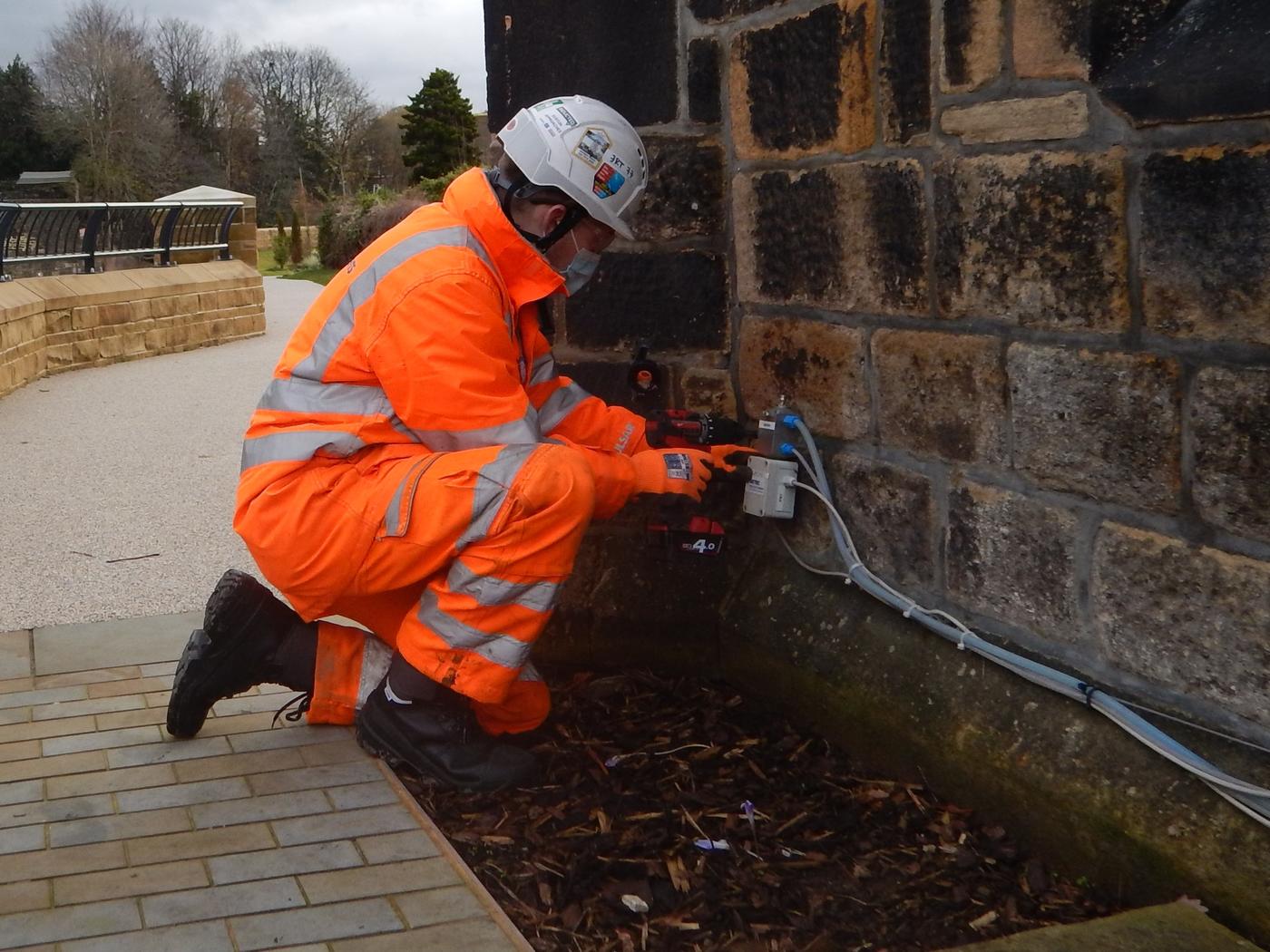Hydrostatic Levelling Cells (HLCs) are an automated means of monitoring for settlement or vertical deformation in structures.

Settlement monitoring is an often time and labour intensive undertaking. Dependent on the needs of a project, achieving a good frequency of readings over a long period can be hard to manage and in some cases could require multiple teams of surveyors performing levelling surveys several times a day.
In many situations Hydrostatic Levelling Cells, sometimes called Liquid Levelling Cells, are a more efficient alternative as they can provide more frequent data at an even higher accuracy than manual methods.
Capable of running 24 hours a day and recording measurements at intervals of less than a minute, HLCs are an extremely effective solution for monitoring vertical movement.
Designed and manufactured in-house by GEO-Instruments, HLCs are one of our flagship sensors and with 10 years of experience in design, installation and maintenance of HLC systems we are the leading provider of liquid levelling cells in the UK and Europe.
Principles
A typical system of HLCs is comprised of a series of cells linked by fluid and air tubing to create a continuous circuit. A circuit requires at least one fluid reservoir to account for level changes and keep pressure in the system. The sensors in each cell record pressure values between the fluid and air circuits. One cell in the circuit is assigned as a reference that the other cells will be compared to. A reference cell is usually located outside of the zone of influence of the expected movement. As the level of an individual cell changes the recorded pressure value will change relative to the reference. This differential pressure value is then calculated as a change in level.
HLC pressure sensors are highly accurate but have a limited tolerance for maximum and minimum pressure. As such, HLC circuits must be carefully installed at the same level across the system, giving greatest possible recordable range. If HLCs are required to monitor movement across multiple levels or along a slope multiple separate circuits can be installed at appropriate heights and referenced to each other in GEO-Instruments’ software.
In most applications, HLCs will calculate their level every 30 seconds and these readings are averaged over a period between 5 to 15 minutes to account for noise and to give a more precise value. These values are instantly sent via an on-site logger to our online Instrumentation and Monitoring software QuickView where engineers and clients can plot graphs and track changes as they happen.
Applications
Once installed, HLCs systems are unobtrusive and can work for years with minimal need for maintenance, particularly in indoor installations. On many projects, HLC systems are installed above head height in actively used environments like basements, kitchens and storerooms and continue to monitor with no impact on the day-to-day workings of the building or structure.
Outdoor installations are also very reliable for long-term monitoring and can be installed in locations so as not to obstruct works but may require more frequent maintenance dependent on site conditions and wear and tear.
For these reasons, HLCs are popular solutions for structural health monitoring and façade monitoring as well as for locations where regular access by surveyors would be impractical.
A HLC system combined with a network of wireless tiltmeters is an effective option for comprehensively monitoring a structure. Combining accurate methods for detecting changes in inclination and vertical movement allows us to build a detailed understanding of the overall effects of ground movement on a building.
Our industry expert installation teams have installed thousands of cells over many projects, large and small.

One notable ongoing project is the Rhodes House redevelopment at Oxford University.
GEO-Instruments worked alongside Keller to monitor their piling and jet grouting works in mid-2021.
The Grade II listed building required intensive monitoring throughout works to examine the influence on the structure. Tolerances were small and any movement needed to be detected and reported instantly.
GEO-Instruments were first on site to install a large HLC system all around the development. This would be combined with a network of Tiltmeters to give a complete picture of the impact and efficacy of the ground works. Even after the key works concluded the automated systems continue to monitor the structure until the redevelopment is complete.
HLCs are commonly used to observe potential settlement in areas near construction or excavation works but are also ideal for monitoring achieved heave during processes like compensation grouting.
HLC systems have also proven to be great solutions for monitoring river walls and embankments.
GEO-Instruments have installed several systems like this along the Thames in central London.
The projects required high frequency, long-term monitoring of the ageing river wall during the construction of new infrastructure such as sewers and gas mains. These projects were particularly challenging due to the location of the works and the large tidal range of the Thames, dramatically increasing the potential for damage to the system. In many of these cases, special consideration was paid to the design of the systems to protect the cells and tubing from avoidable damage.
HLC systems are versatile, low maintenance and cost-effective. They are custom designed for each project and while they can be complex to install, their accuracy, reliability and efficiency are worth the extra effort.
Find out more about our Hydrostatic Levelling Cell projects.


